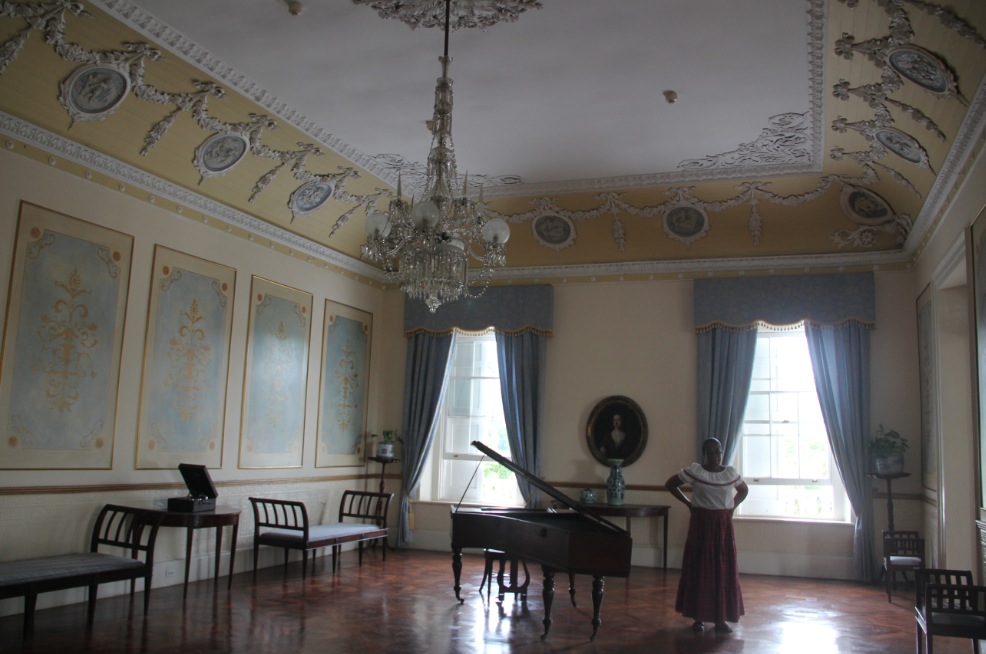I’ve written about Devon House but only recently returned to do a tour of the Georgian style house, which is located in Kingston. Devon House was built in 1881 for George Stiebel on a property that was known as Devon Penn.

Popularly described as Jamaica’s first black millionaire, Stiebel, the child of German and Jamaican parents, was a carpenter, shipper and gun runner. He struck gold after he invested in a mine in Venezuela and made a fortune, returning to the island a rich man. Stiebel got involved in politics and business, bought 99 properties — it was illegal to own 100 or more – and built Devon House.


The house features classical Georgian lines – simple form, detailing and symmetry. It was built entirely of brick and wood with high ceilings, carved transoms over elegant doors, and ample louvered windows that circulate air efficiently throughout the house. The furniture is a mix of Jamaican, English and French antiques, and reproductions. The large 35-foot ballroom is, without doubt, the mansion’s showpiece with its Broadwood piano, Wedgwood ceiling and English chandelier that Stiebel bought.


Stiebel married Magdalene Baker in 1851 and had two children Sigismund, named after his father, and Theresa. When he died in 1896, the mansion passed to Theresa, then Theresa Jackson, the only surviving child. It was later sold to the Melhados in 1922, then to the Lindos, who lived there until 1965. Devon House was turned over to the government of Jamaica. Today, the mansion, which sits on 11 acres, is known as one of the premier destinations in Kingston to enjoy culture, art and heritage, the lush grounds, and its very popular “I-scream” (ice cream).





The mansion has been restored several times, the latest in 2008. Many of the old buildings from Stiebel’s time are still in use. For example, the Grog Shoppe was the horse and carriage stable and blacksmith’s shop; the Courtyard Shops were servants quarters, and the current Devon House Bakery used to be the kitchen. When I visited recently, workers were replacing the wooden shingles on these buildings.


Devon House Particulars
Tours run on weekdays only with the last tour at 4:30 p.m.
Cost: $10, per person, includes ice cream.
Devon House is located at 26 Hope Road in Kingston.
This is my submission to Travel Photo Thursday, organized by Nancie at Budget Travelers Sandbox. Be sure to head over and check out more photos from locations around the world.








































